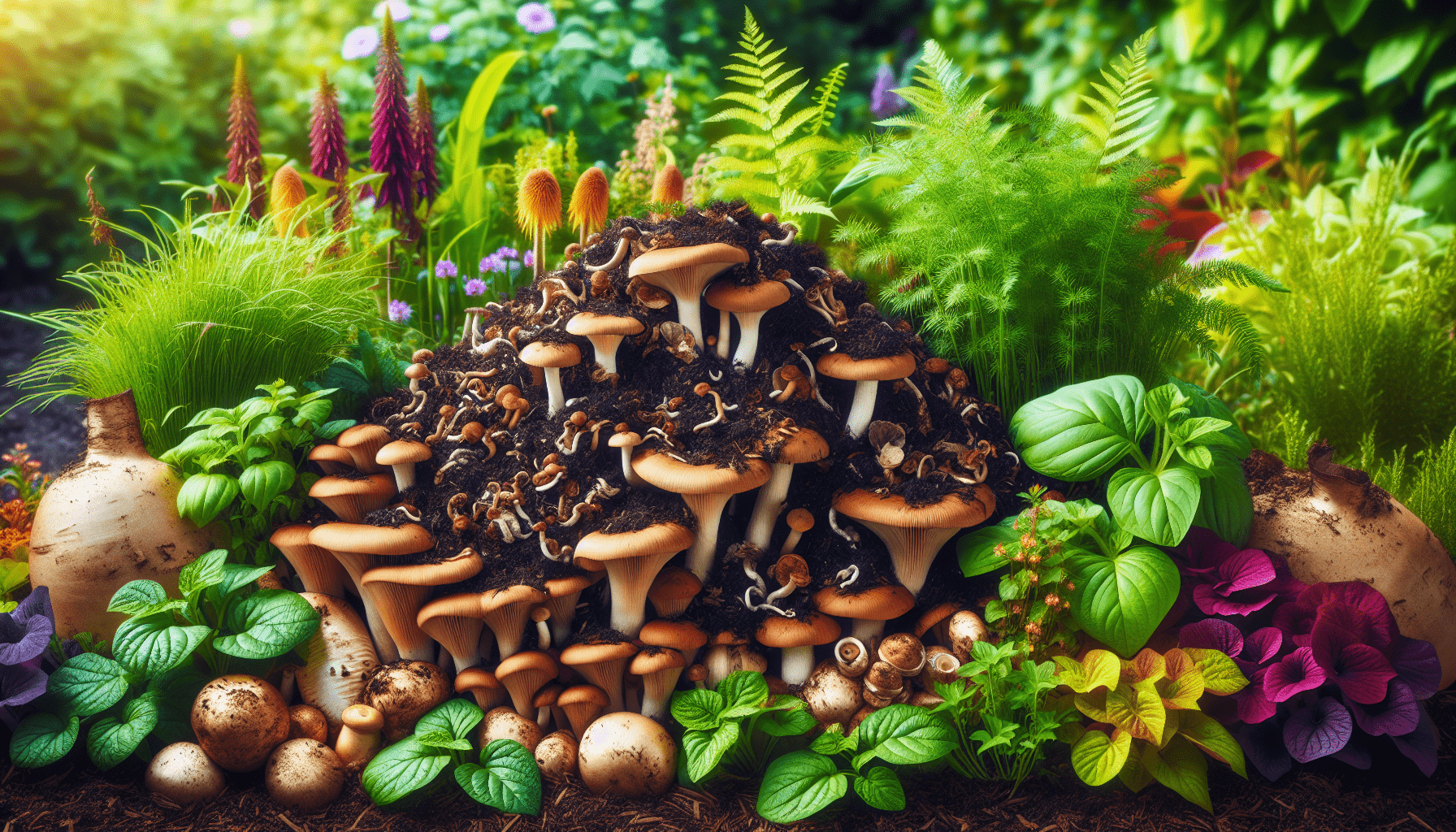Welcome to an exploration of the question: Does mushroom compost attract pests or insects? If you’re wondering whether using mushroom compost in your garden will bring unwanted visitors, fear not. By understanding how to properly manage your compost heap, you can enjoy the benefits of its nutrients while keeping pesky pests at bay. Let’s dive into the world of mushroom compost and discover how to maintain a pest-free garden.
Does Mushroom Compost Attract Pests Or Insects?
Have you ever wondered if using mushroom compost in your garden could attract unwanted pests or insects? Let’s dig deep into this question and find out the facts!

What is Mushroom Compost?
Mushroom compost, also known as mushroom soil, is a growing medium that is created from the composted materials used in cultivating mushrooms. It is a mixture of various organic materials such as hay, straw, corn cobs, and poultry manure. This nutrient-rich compost is often used by gardeners and farmers to improve soil quality and provide essential nutrients for plants.
The Composition of Mushroom Compost
Before we delve into whether mushroom compost attracts pests or insects, let’s take a closer look at its composition. The ingredients used in making mushroom compost are carefully selected and balanced to create an ideal environment for mushroom growth. While the specific ingredients may vary depending on the manufacturer, most mushroom composts contain a mix of organic materials such as:
- Hay
- Straw
- Corn cobs
- Poultry manure
These organic materials go through a process of decomposition and composting to create a nutrient-rich medium that is beneficial for plants.
Learn about mushroom composting
The Benefits of Using Mushroom Compost
Using mushroom compost in your garden or farm offers numerous benefits. Some of the advantages of adding mushroom compost to your soil include:
-
Improved Soil Structure: Mushroom compost helps improve soil structure by enhancing moisture retention and drainage.
-
Nutrient-Rich: Mushroom compost is packed with essential nutrients that plants need to thrive, such as nitrogen, phosphorus, and potassium.
-
Suppression of Soil-Borne Diseases: The beneficial microorganisms in mushroom compost can help suppress harmful pathogens in the soil, reducing the risk of soil-borne diseases in plants.
-
Enhanced Plant Growth: Plants grown in soil amended with mushroom compost tend to grow healthier and produce better yields.
Debunking the Myth: Does Mushroom Compost Attract Pests?
One of the common misconceptions about mushroom compost is that it attracts pests and insects due to its rich organic content. However, this is not entirely true. While mushroom compost does contain organic materials that can attract some pests, the composting process significantly reduces the likelihood of attracting pests.
The Composting Process
During the composting process, the organic materials in mushroom compost go through a series of microbial actions that break down the materials and transform them into a stable and nutrient-rich medium. This process generates high temperatures, reaching levels that are inhospitable to most pests and pathogens.
Pest Prevention Measures
To further prevent pests from being attracted to mushroom compost, you can take the following measures:
- Covering the Compost: Covering your mushroom compost with a tarp or lid can help deter pests from accessing the compost.
- Regular Turning: Turning the compost regularly can help aerate the materials and disrupt any potential pest habitats.
- Proper Storage: Storing your mushroom compost in a dry and well-ventilated area can reduce the risk of pests infesting the compost.

The Role of Insects in Mushroom Compost
While some insects may be attracted to the organic content of mushroom compost, it’s essential to understand that not all insects are harmful. In fact, certain insects play a beneficial role in the decomposition process of compost.
Beneficial Insects
Some beneficial insects that may be attracted to mushroom compost include:
- Earthworms: Earthworms help break down organic matter, aerate the soil, and improve nutrient cycling.
- Dung Beetles: Dung beetles assist in the decomposition of organic matter and the recycling of nutrients.
- Springtails: Springtails feed on fungi and decaying plant matter, contributing to the breakdown of organic materials.
By promoting the presence of beneficial insects in your mushroom compost, you can enhance the composting process and improve soil health in your garden.
Best Practices for Using Mushroom Compost
To maximize the benefits of using mushroom compost in your garden and reduce the likelihood of attracting pests or insects, following best practices can be helpful.
Mixing Compost with Soil
Before applying mushroom compost to your garden beds or containers, it’s advisable to mix the compost thoroughly with the existing soil. This ensures an even distribution of nutrients and prevents clumping of the compost, creating an ideal environment for plant growth.
Applying Compost in Moderation
While mushroom compost is beneficial for plants, applying it in excessive amounts can lead to nutrient imbalances in the soil. It’s best to follow recommended guidelines for compost application rates based on the specific needs of your plants.
Companion Planting
Companion planting involves growing different plant species together to maximize growth and deter pests naturally. By incorporating companion plants that repel pests into your garden along with mushroom compost, you can create a balanced ecosystem that minimizes pest issues.

Conclusion
In conclusion, while mushroom compost contains organic materials that may attract some pests and insects, the composting process significantly reduces the likelihood of pest infestations. By following best practices for using mushroom compost and promoting the presence of beneficial insects in your garden, you can reap the numerous benefits of this nutrient-rich growing medium without worrying about pests. So go ahead and incorporate mushroom compost into your gardening routine to enhance soil health and boost plant growth!

